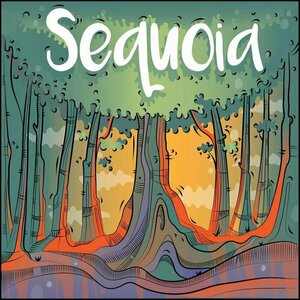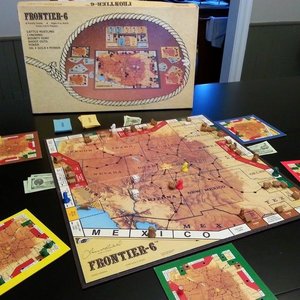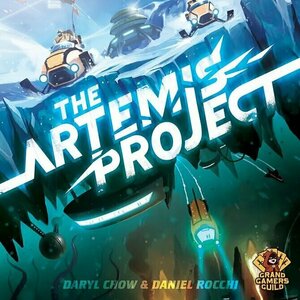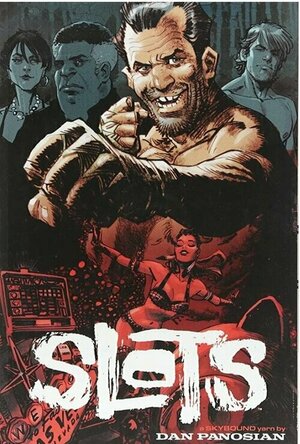
Slots
Book
You can say this about the life of Stanley Dance: he did it his way. Unfortunately, his way never...
Graphic novels
Purple Phoenix Games (2266 KP) rated Sequoia in Tabletop Games
Mar 17, 2021
Sequoia is a game of dice rolling and area majority in which players are trying to grow the largest trees across different forests. To setup the game, lay out the 11 forest cards on the table within reach of all players, and randomly assign a 1st and 2nd place token to each card. Each player receives 5 dice and 20 tree tokens in their chosen color. The game is ready to begin!
On each turn, players will simultaneously roll their 5 dice – keeping the results secret from all other players! After rolling, players will create 2 pairs using 4 of their dice (one will be left out). Everyone reveals their pairs at the same time, and will place a tree token on the card that matches each of their dice pairs. For example, my pairs might be a 5 and a 2, and a 6 and a 6, so I would put a tree token on the 7 and 12 forest cards. Play continues in this manner (rolling dice, creating pairs, and placing tree tokens), until players have placed all of their tokens. Once all tokens have been placed, the game moves to the scoring phase. For each forest card, the 1st and 2nd place tokens go to the players who have the most and 2nd most tree tokens on the forest card. Once all cards have been scored, count up final points, and the player with the most points wins!
I have to start off by saying that Sequoia really surprised me. I was expecting a fast, light game, and that’s what I got. But I also got a game with a fun amount of player interaction and strategy that keeps all players engaged. You may not know what forest cards a player will choose each turn, but you can see who has already played tree tokens to each card, which can help drive your strategy. Do you want to directly compete with everyone and really pile on the tokens to win 1st place on a card? Or do you want to spread your tokens around to as many forest cards as possible, and hopefully maximize points that are otherwise being ignored by opponents? Especially since the 1st and 2nd place tokens are randomly assigned and have differing values, you really don’t know which forests will yield the highest points until the end of the game. Sequoia is a Yahtzee-esque game that allows direct player interaction, and that elevates the overall gameplay for me.
Let’s talk about components for a minute. These components are great. The forest cards are a nice thick card stock. The tree tokens and 1st/2nd place tokens are all good chunky bits that will definitely hold up over time. And the dice are nice little d6’s that are easy to read and fun to manipulate. The color matching with the dice and tree tokens is also really nice, and I appreciate that uniformity for each player color. All in all, a high quality production for such a small game.
If you ask me, I think Sequoia is a perfect filler game. It is super fast to teach and play, the setup/cleanup takes literally seconds, and it provides an engaging and fun gameplay. Beyond being a filler game, it is a great small standalone game as well. Want something fast to play while the oven is pre-heating for dinner? Pull out Sequoia! I also love that it is simple enough for younger players to understand – it is a numbers game, but you can also visually see what your opponents are working towards, and that lends itself to a good amount of player interaction. Definitely a game that I can see getting a decent amount of table time in my group! Purple Phoenix Games gives this one a sky-rocketing 8 / 12. Check it out, you might be surprised!
Purple Phoenix Games (2266 KP) rated Bandada in Tabletop Games
Jan 19, 2021
In Bandada players are attempting to catch and return birds that have escaped from the local zoo. These birds are attracted to different food morsels (namely black, blue, and yellow dice) and by manipulating the food source players may be able to catch all the right birdies and score tons of points.
DISCLAIMER: We were provided a prototype copy of this game for the purposes of this review. These are preview copy components, and I do not know for sure if the final components will be any different from these shown. Also, it is not my intention to detail every rule in the game, as there are just too many. You are invited to download the rulebook, back the game through the Kickstarter campaign, or through any retailers stocking it after fulfillment. -T
Disclaimer the second: I am previewing this using the Solo Adventure Variant, which uses many of the same rules as the main multiplayer rules with a few twists.
To setup the solo player will roll all 12 dice and sort them by color. Shuffle the bird cards and reveal three cards face-up in a market row. Grab a scoring cube for the score card, and choose which location card to play. Select (randomly or not) a bonus scoring card and the game may begin!
There are other optional variant rules that can be added to the adventure, but I will not be detailing those here.
Turns are divided into two phases: the Drafting phase and the Cleanup phase. During the Drafting phase the player will choose one of the face-up bird cards to be added to their personal bandada, perform the action described on the top of the card, and then add it to their bandada (personal tableau).
After drafting and bandada-ing the player will perform the Cleanup phase by scoring points based on the bird card abilities printed on the bottom, discarding the remaining face-up cards, and then adding three new birds cards to that market row. This phase differs from the multiplayer rules in that birds are scored once added to the bandada in multiplayer and then again during the Cleanup phase. In the solo mode they are scored only once at the end of the Cleanup phase.
The bird cards all have actions printed at the top that will manipulate the food dice in some way. Actions could simply give the birds a specific number of colored dice and adjust the value up or down. Some abilities will have the player flipping the dice to the opposite side, or adjusting multiple dice by splitting a positive or negative value. Of note in this game is that dice values wrap around the die. For example to increase the value of a 6 die it then wraps around to become a value 1. Manipulation of these food dice will make or break the game success, as I found in all my plays.
The game continues in this fashion until after the fourth full round. The player then totals their score on the score card, adds the points from the bonus card chosen at the beginning, and checks for the victory condition on the location card (the rules suggest starting in Africa). If the player has met the victory condition, the trip was a success! If, like me, the player fails to make 35 points in Africa every time, they must play again!
Components. Again, this is a prototype copy of the game, but I have to say that this is a beautiful minimalistic game. It consists of primarily dice and cards. The dice are translucent and good quality, though translucent yellow with white pips can be hard to read at times. The cards are good quality as well and feature breathtaking avian art. It really does look great on the table and doesn’t take up a ton of room, so I have very few negatives here.
Gameplay is super speedy and agonizing for a solo player. Maximizing points on every turn and having to consider specific win conditions makes for a crunchy little card game that takes about 10 minutes to play. It is definitely something I will be reaching for whenever I have a spare 15 minutes. With setup and teardown I am looking at a fulfilling, if not frustrating, card game experience that can be both anxiety-triggering and also quite calming. I was not sure what to expect when I opened the box, but boy am I glad I have this little gem.
If you are in the market for a great little solo game that can also play multiplayer, looks amazing, and is quick to complete, then look no further. If you are an avian aficionado and need your board and card game collection to reflect this, check out Bandada. I need you all to also promise to write me back once you figure out how to succeed in Africa, as I just plum can’t do it. But I am going to keep trying. As I always say, a game that makes you want to play it more is a mark of a great game, and I think a great game comes in this little box.
The Marinated Meeple (1853 KP) rated Frontier 6 in Tabletop Games
May 7, 2018
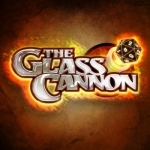
The Glass Cannon Podcast
Podcast
In the spirit of old-school tabletop role-playing games, a collection of five super-nerds engage in...
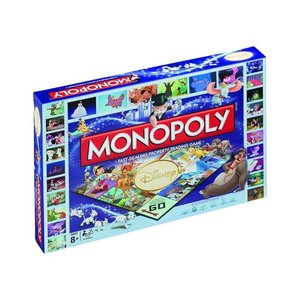
Disney Classic Monopoly Board Game
Tabletop Game
Disney Classic Monopoly will take you back in time to the magical, enchanting world of Disney! As...
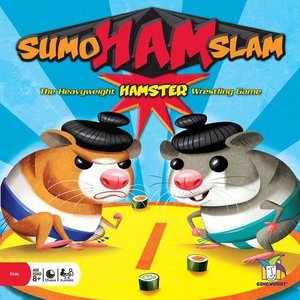
Sumo Ham Slam
Tabletop Game
Step into the fierce and furry world of full-contact Sumo hamster wrestling! Using magnetic force,...
SumoGames DexterityGames KidsGames
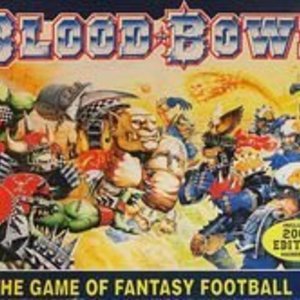
Blood Bowl (Third Edition)
Tabletop Game
Blood Bowl is a game of Fantasy Football. The basic game features a match between a human team and...
BloodBowl Boardgames FantasyFootball
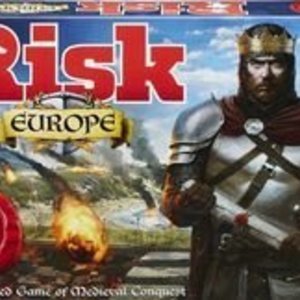
Risk Europe
Tabletop Game
Don a crown, raise the banners, and step into the role of a medieval king in feudal Europe in the...
Purple Phoenix Games (2266 KP) rated The Artemis Project in Tabletop Games
Apr 6, 2021
The Artemis Project is a game of dice/worker placement in which players are trying to build and sustain a prosperous colony on Jupiter’s moon Europa. Played over 6 rounds, players will take turns rolling and placing dice across the regions of the board to collect resources, construct buildings, recruit and train colonists, and partake in expeditions to explore this vast ice-land. To begin, follow the setup instructions in the rulebook for the appropriate player count. Each player receives a player board, dice, and markers in their chosen color. Populate the board for the first round, select a starting player, and the game is ready to begin!
Disclaimer: I do not intend to rehash the entire rulebook in this review, as there are just too many details. For a more in-depth look at The Artemis Project, pick up a copy from your FLGS or directly from the publisher! -L
To start each round, all players will simultaneously roll all 5 of their dice. Once players are happy with their results, the round is ready to properly begin. Each round is broken into three phases: Placement, Resolution, and Upkeep. To begin the Placement phase, starting with the first player, players will take turns assigning one die at a time to the 7 regions of the board. These regions are: Basecamp, Vents, Quarry, Gantry, Doorstep, Academy, and Outfitters. (I will explain each region in more detail in the next section!) The value of the dice placed in any region is important, because it will dictate what you are allowed to do, or when you are allowed to resolve the action for that region – so choose your placements wisely.
Once every player has placed all 5 of their dice, the Resolution phase begins. During the Resolution phase, each of the regions of the board will be resolved in order, allowing players to perform their region-specific actions. Resolution starts with Basecamp. Placing dice at Basecamp allows players to partake in Expeditions in an effort to earn Expedition Badges (which translate to end-game VP), as well as extra rewards. Each Expedition has a difficulty level which must be equaled or surpassed by the total of all dice placed on that card. If the difficulty is surpassed, the Expedition is a success and rewards are doled out accordingly, but if the Expedition fails, no rewards are earned by anyone.
The next 2 regions, Vents and Quarry, allow players to collect Energy and Minerals, respectively, and are resolved in the same way. Players will collect a number of resources equal to their played die value. Pretty straight-forward! Moving on to the Gantry region, the value of dice placed on any building tiles are considered bids for buying/constructing that building. You can bid against opponents for building tiles, but each bid must increase the previous amount. When resolving the Gantry, the highest value die on a tile is the winner, and that player must pay their die-amount in Minerals to collect that tile. Buildings are added to your colony, and allow you to perform special actions once they are fully-staffed (all colonist slots on the tile are filled).
Next is the Doorstep – depending on the value of dice you placed there, you will be able to recruit 1-3 new colonists. Recruiting a colonist costs you 2 Energy per new addition, and any new colonists you recruit can be placed immediately into any of your buildings (if space is available), or into your Shelter where they will wait to be used. The Academy region allows you to exchange a colonist of your choice for one of a different type/occupation, again, depending on the value of the die used. And finally, the Outfitters region does not resolved during this phase, because it’s action is performed immediately upon dice placement. Any dice placed to the Outfitters gives Tool Kits (used to manipulate die values at the start of each round) to the player, based upon the die value.
The remaining element of the Resolution phase is the Even card. At the start of each round, an Event card is drawn, and will pertain to a certain region of the board. During the Resolution phase, when that region is reached, the Event card will be resolved – either penalizing players or benefitting them in some way. I have purposefully left out a few elements of the Resolution phase for you to discover on your own!
Once all regions have been resolved, the round moves to the Upkeep phase. During this phase, all players can choose to move 1 colonist to a building tile, or swap any 2 colonists between buildings. This is not required, but can only be performed once during this phase. Next, if any players have fully-staffed buildings (all colonist slots are filled), they may activate the listed ability. And finally, for any colonists left in your shelter and not in a building, you must pay 1 Energy for each to keep them warm! The game board is now refreshed for the next round, a new starting player is selected, and the new round is ready to begin. After the 6th and final round, VPs are tallied – earned through number of building tiles, Expedition Badges, sets of resources, and sets of colonists – and the player with the most VP is the winner!
I know that seems like a lot, but I promise that once you start the first round, everything is pretty intuitive and the game flows well. The turn sequence and phases are logical and easy to understand. The game board itself has lots of helpful icons that work as reminders throughout gameplay, and the rulebook has a nice and concise round overview on the last page as well, which is easy to refer back to at a moment’s notice. I’ll go ahead and touch on components here, since I kind of already started to do so. The components in this game are great! The game board and cards are all sturdy and have colorful and immersive artwork. The dual-layered player boards are high quality, the colonist meeples are cute and effective, the building tiles and cardboard chits are strong and can definitely hold up to many plays, and the dice are easy to roll and read. Definitely an A+ on components from me.
I have to admit that The Artemis Project surprised me. At its core, it is a worker placement game, and that in and of itself lends itself to a certain gameplay. You’re trying to complete your own agenda, being the first to snag those important placements that you need to accomplish those goals, while also blocking opponents from doing the same. The thing that makes The Artemis Project unique is that the ‘workers’ in this game are dice. And their value is what dictates the resolution of each region. Just because you place a die in a region first, does not necessarily mean that you will get to resolve first – depending on how your opponents play, they could block you entirely! The use of dice adds an extra layer of strategy to the gameplay that really elevates it beyond a simple worker placement mechanic. Another great thing about this game is that there is no one way to win – there are several strategies that you could play by in an effort to earn VPs. Maybe you are trying to complete as many Expeditions as possible, or want to construct as many buildings as possible. Either strategy can work, and all strategies can easily be adapted and altered during gameplay.
I am so happy that I came across this game on Kickstarter. The game is strategic, engaging, and just fun to play. I’m not necessarily a huge fan of worker placement games, but the approach to the mechanic taken by The Artemis Project really puts a unique twist on it that adds to the gameplay. This is one KickStarter that was definitely worth the investment. Check it out if you haven’t heard of it, or if you’re looking to elevate your worker placement games. Purple Phoenix Games gives it an enterprising 10 / 12.
